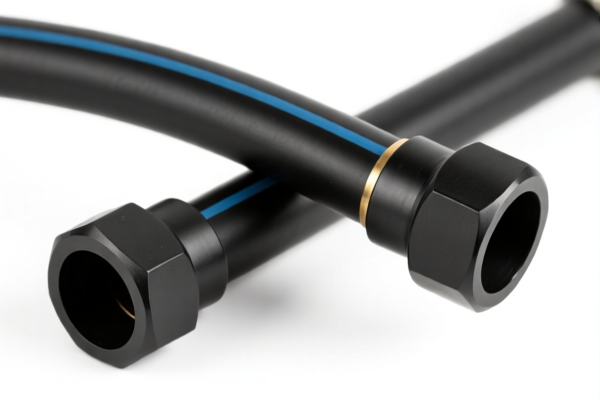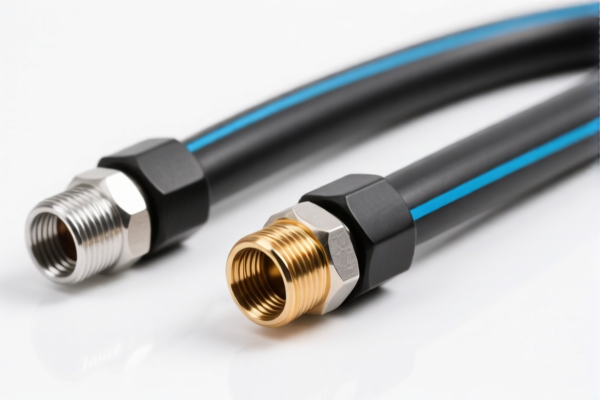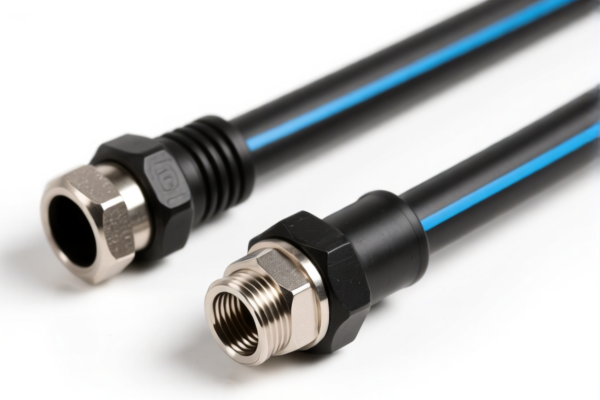| HS Code | Official Doc | Tariff Rate | Origin | Destination | Effective Date |
|---|---|---|---|---|---|
| 7307991000 | Doc | 83.7% | CN | US | 2025-05-12 |
| 7307995015 | Doc | 84.3% | CN | US | 2025-05-12 |
| 8307103000 | Doc | 58.8% | CN | US | 2025-05-12 |
| 8307903000 | Doc | 58.8% | CN | US | 2025-05-12 |




Tubing Fittings
Tubing fittings are components used to connect, terminate, and change the direction or size of flexible tubing. They are widely employed in various industries to create leak-tight connections for fluids and gases. Unlike pipe fittings which connect rigid pipes, tubing fittings are designed for use with more pliable materials.
Materials
A diverse range of materials are used in the construction of tubing fittings, selected based on the application's requirements for pressure, temperature, corrosion resistance, and the fluid being conveyed. Common materials include:
- Stainless Steel: Offers excellent corrosion resistance and high-temperature performance, suitable for demanding applications in chemical processing, food and beverage, and pharmaceutical industries. Grades 304 and 316 are frequently used.
- Brass: Provides good corrosion resistance, machinability, and is commonly used for water, gas, and pneumatic applications.
- Plastic (e.g., PVC, Polypropylene, Nylon, PTFE): Lightweight, corrosion-resistant, and cost-effective. Used in low-pressure applications such as irrigation, chemical transfer, and laboratory use. PTFE (Teflon) offers superior chemical resistance.
- Carbon Steel: Strong and economical, often used with coated finishes for corrosion protection in applications like hydraulic systems.
- Aluminum: Lightweight and corrosion-resistant, suitable for pneumatic and low-pressure fluid systems.
Purpose and Function
The primary purposes of tubing fittings are:
- Connection: Joining sections of tubing together.
- Termination: Ending a tubing run, often with a threaded connection for attaching to other components.
- Flow Control: Some fittings incorporate valves or restrictors to regulate fluid flow.
- Directional Change: Elbows, tees, and crosses change the direction of tubing runs.
- Branching: Tees and crosses allow for splitting a single tubing line into multiple branches.
- Adapting: Connecting tubing of different sizes or materials.
Usage Scenarios
Tubing fittings are found in a vast array of applications, including:
- Pneumatic Systems: Connecting air lines for tools, automation equipment, and compressors.
- Hydraulic Systems: Connecting fluid lines for machinery, construction equipment, and automotive applications.
- Fluid Transfer: Chemical processing, water lines, fuel lines, and laboratory equipment.
- Instrumentation: Connecting sensors, gauges, and control valves.
- Medical Devices: Connecting fluid lines in IV systems, dialysis machines, and other medical equipment.
- Automotive: Fuel lines, brake lines, and coolant systems.
- Irrigation: Connecting water lines for sprinklers and drip systems.
Common Types
Numerous types of tubing fittings exist, each designed for specific connection methods and applications:
- Compression Fittings: Utilize a compression sleeve or nut to create a tight seal by deforming the tubing. Suitable for a wide range of tubing materials and pressures.
- Flare Fittings: Require flaring the end of the tubing to create a matching conical surface for a leak-tight connection. Common in automotive and instrumentation applications.
- Push-to-Connect Fittings (Quick Connect Fittings): Offer rapid connection and disconnection without the need for tools. Often used in pneumatic and low-pressure fluid systems.
- Threaded Fittings (NPT, BSP): Utilize tapered or parallel threads to create a mechanical seal. NPT (National Pipe Tapered) is common in North America, while BSP (British Standard Parallel) is used in other regions.
- Barbed Fittings: Feature barbs that grip the inside of flexible tubing. Commonly used with soft tubing materials like PVC and rubber.
- Socket Weld Fittings: Require welding the tubing into the fitting socket for a permanent connection.
- O-Ring Fittings (Face Seal Fittings): Utilize an O-ring to create a leak-tight seal between the fitting face and the tubing. Used in high-pressure applications.
- Union Fittings: Allow for easy disconnection and reconnection of tubing sections without rotating the connected components.
Tubing fittings generally refer to components used to connect, terminate, and change the direction or flow of tubing, typically made of iron or steel. They are employed in various applications such as plumbing, hydraulic systems, and industrial piping.
The following HS codes are relevant to tubing fittings based on the provided information:
- 7307.99.1000: This HS code covers tube or pipe fittings (for example, couplings, elbows, sleeves) of iron or steel, specifically categorized as 'Other', 'Other', and 'Not machined, not tooled and not otherwise processed after forging', made of iron or nonalloy steel. The total tax rate is 83.7%, comprising a 3.7% base tariff, a 25.0% additional tariff, and a 30% additional tariff applicable to steel and aluminum products from 2025.4.2.
- 7307.99.5015: This HS code also covers tube or pipe fittings of iron or steel, categorized as 'Other', 'Other', 'Other' and specifically for Nipples made of iron or nonalloy steel. The total tax rate is 84.3%, consisting of a 4.3% base tariff, a 25.0% additional tariff, and a 30% additional tariff applicable to steel and aluminum products from 2025.4.2.
- 8307.10.3000: This HS code covers flexible tubing of base metal, with or without fittings, specifically those made of iron or steel with fittings. The total tax rate is 58.8%, consisting of a 3.8% base tariff and a 25.0% additional tariff, with a 30% additional tariff applicable from 2025.4.2.
- 8307.90.3000: This HS code covers flexible tubing of base metal, with or without fittings, specifically those made of other base metal with fittings. The total tax rate is 58.8%, consisting of a 3.8% base tariff and a 25.0% additional tariff, with a 30% additional tariff applicable from 2025.4.2.
Please note that for HS codes 7307.99.1000 and 7307.99.5015, the fittings must not be machined, tooled, or otherwise processed after forging. Additionally, a 30% additional tariff will be applicable to steel and aluminum products from 2025.4.2 for all listed HS codes.
Customer Reviews
No reviews yet.